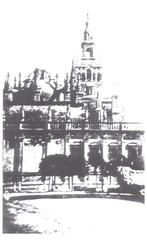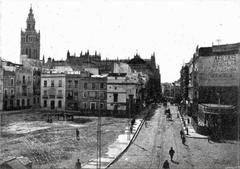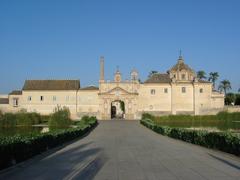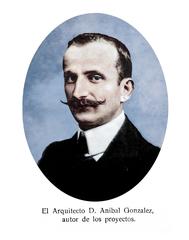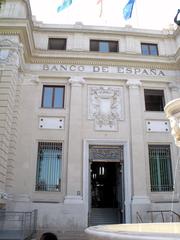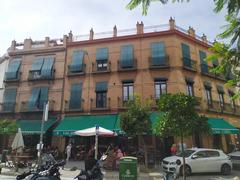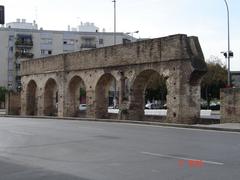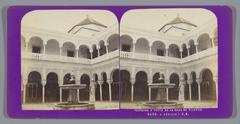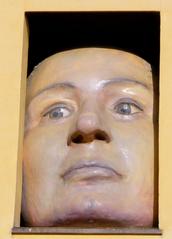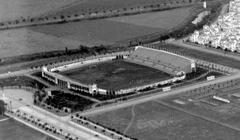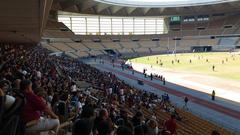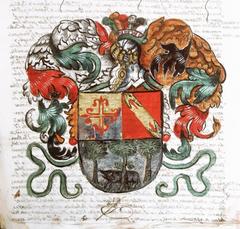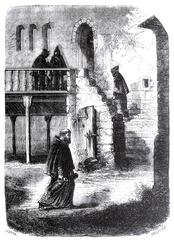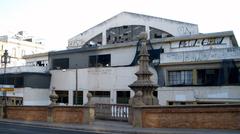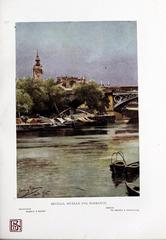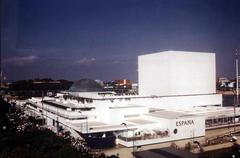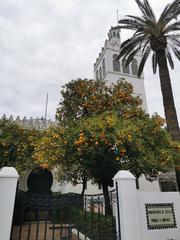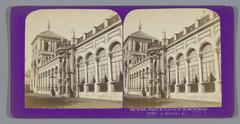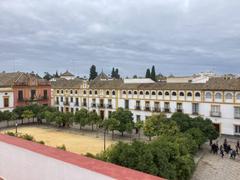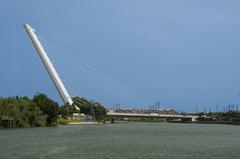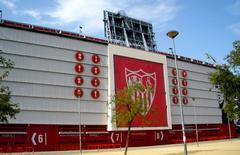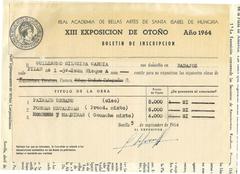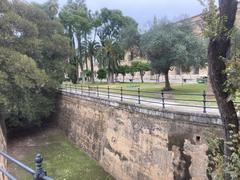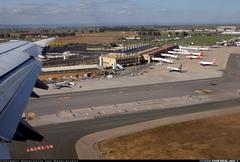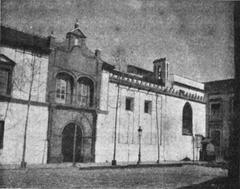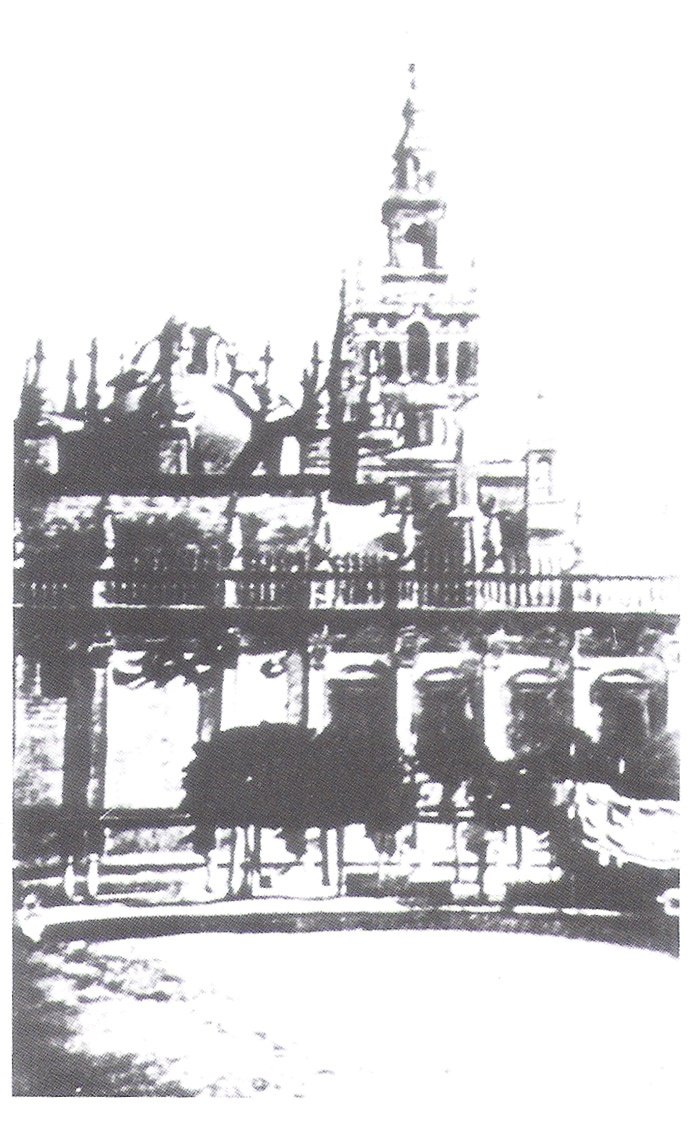
Visiting Catedral de Sevilla: Hours, Tickets, History, and Tips
Date: 17/07/2024
Introduction
The Seville Cathedral, known locally as Catedral de Sevilla, stands as a monumental testament to Seville’s rich historical tapestry and architectural grandeur. Renowned as the largest Gothic cathedral in the world and the third-largest church overall, this awe-inspiring structure holds immense cultural and religious significance. The cathedral’s origins date back to 1401 when construction began on the site of a former Almohad mosque, reflecting the city’s transition from Islamic to Christian rule. Completed in 1506, the cathedral’s architectural style is predominantly Gothic, with elements of Mudéjar, Renaissance, Baroque, and Neo-Gothic styles, showcasing the various influences over centuries (Seville Cathedral History) (Gothic Architecture).
La Giralda, the iconic bell tower, originally served as a minaret during the Almohad dynasty and remains a symbol of the city’s layered history. The Seville Cathedral played a pivotal role during the Age of Exploration, serving as the primary port for trade between Spain and the Americas and housing the Casa de Contratación, or House of Trade (La Giralda) (Age of Exploration). Visitors to the cathedral can explore its opulent interior, numerous chapels, and the tomb of Christopher Columbus, making it a must-visit destination for anyone traveling to Seville (Columbus Tomb).
Table of Contents
- Introduction
- History of Seville Cathedral
- Visitor Information
- Nearby Attractions
- Special Events and Guided Tours
- Restoration and Preservation Efforts
- Cultural and Religious Significance
- Conclusion
- FAQs
History of Seville Cathedral
Origins and Early Construction
The origins of this grand structure date back to the early 15th century. Construction began in 1401, following the decision by the city’s leaders to replace the existing mosque, which had been built during the Almohad dynasty in the 12th century. The mosque’s minaret, known as La Giralda, was preserved and later converted into the cathedral’s bell tower. This decision was emblematic of the Reconquista, a period marked by the Christian reclamation of territories previously under Muslim rule (Seville Cathedral History).
Architectural Evolution
The Seville Cathedral’s construction spanned over a century, with its completion marked in 1506. The architectural style of the cathedral is predominantly Gothic, characterized by its soaring vaults, intricate stonework, and expansive nave. The cathedral’s design was intended to reflect the wealth and power of Seville, which had become a major trading hub following the discovery of the Americas. The cathedral’s architects and builders drew inspiration from other grand European cathedrals, such as Notre-Dame de Paris and the Cologne Cathedral, but sought to surpass them in scale and grandeur (Gothic Architecture).
La Giralda - A Symbol of Continuity
La Giralda, the cathedral’s iconic bell tower, serves as a symbol of the city’s layered history. Originally constructed as a minaret in 1198, it was one of the tallest structures in the world at the time, standing at 97.5 meters. Following the Reconquista, the minaret was repurposed as a bell tower, with a Renaissance-style belfry added in the 16th century. The tower’s design, which features a blend of Islamic and Christian architectural elements, reflects the cultural syncretism that characterizes much of Andalusian history (La Giralda).
The Cathedral’s Role in the Age of Exploration
The Seville Cathedral played a pivotal role during the Age of Exploration. Following Christopher Columbus’s voyages to the New World, Seville became the primary port for trade between Spain and the Americas. The cathedral housed the Casa de Contratación, or House of Trade, which regulated commerce and navigation. This period of prosperity is reflected in the cathedral’s opulent interior, which features numerous chapels, altarpieces, and artworks funded by the wealth generated from transatlantic trade (Age of Exploration).
The Tomb of Christopher Columbus
One of the cathedral’s most notable features is the tomb of Christopher Columbus. The explorer’s remains were moved to the Seville Cathedral in 1898, following Spain’s loss of its last colonies in the Americas. The tomb is an elaborate monument, featuring four heraldic figures representing the kingdoms of Castile, León, Aragon, and Navarre, which bear the casket. The tomb’s design and placement within the cathedral underscore Columbus’s enduring legacy and the historical significance of his voyages (Columbus Tomb).
The Chapter House and the Archives
The Seville Cathedral is also home to the Chapter House and the General Archive of the Indies. The Chapter House, completed in the 16th century, is renowned for its elliptical design and richly decorated interior. It serves as the meeting place for the cathedral’s chapter, the governing body responsible for its administration. The General Archive of the Indies, housed in a separate building adjacent to the cathedral, contains a vast collection of documents related to the Spanish Empire’s colonial administration. These archives provide invaluable insights into the history of Spain’s overseas territories and the global impact of its maritime empire (General Archive of the Indies).
Visitor Information
Visiting Hours and Tickets
The Seville Cathedral is open to visitors at various times throughout the week. It’s recommended to check the official website for the most up-to-date visiting hours and ticket prices. Generally, the cathedral is open from 11:00 AM to 5:00 PM on weekdays, with extended hours on weekends. Tickets can be purchased online or at the entrance, with options for guided tours and combined tickets for the cathedral and La Giralda (Opening Hours and Tickets).
Travel Tips
- Best Time to Visit: To avoid large crowds, consider visiting early in the morning or late in the afternoon. Weekdays are generally less busy than weekends.
- Getting There: The cathedral is centrally located in Seville’s historic district and is easily accessible by public transport, including buses and trams. It’s also within walking distance of many major hotels and attractions.
- Accessibility: The cathedral is wheelchair accessible, with ramps and elevators available for visitors with mobility issues.
- Photography: Photography is allowed inside the cathedral, but the use of flash and tripods is prohibited.
Nearby Attractions
Other Historical Sites in Seville
- Alcázar of Seville: This royal palace is a UNESCO World Heritage Site and features stunning examples of Mudéjar architecture (Alcázar).
- Plaza de España: A magnificent square built for the Ibero-American Exposition of 1929, featuring a large, semi-circular building with a moat and beautiful tile work (Plaza de España).
- Barrio Santa Cruz: The old Jewish quarter, known for its narrow, winding streets, charming courtyards, and vibrant atmosphere (Barrio Santa Cruz).
Recommended Itineraries
- Half-Day Tour: Visit the Seville Cathedral, La Giralda, and the Alcázar of Seville. Enjoy lunch at a nearby tapas bar.
- Full-Day Tour: Start with the cathedral and La Giralda, followed by the Alcázar of Seville and a stroll through Barrio Santa Cruz. End the day at Plaza de España.
Special Events and Guided Tours
The Seville Cathedral hosts numerous liturgical events, including the famous Holy Week processions, which feature elaborate floats and religious iconography. Guided tours are available and offer in-depth insights into the cathedral’s history, architecture, and art. These tours can be booked in advance through the official website or various tour operators.
Restoration and Preservation Efforts
Over the centuries, the Seville Cathedral has undergone numerous restoration and preservation efforts to maintain its structural integrity and artistic heritage. Significant restoration work was carried out in the 19th and 20th centuries, addressing damage caused by natural disasters, such as earthquakes, and the wear and tear of time. These efforts have ensured that the cathedral remains a vibrant and active place of worship, as well as a major tourist attraction. Modern preservation techniques continue to be employed to safeguard the cathedral’s architectural and artistic treasures for future generations (Restoration Efforts).
Cultural and Religious Significance
The Seville Cathedral holds immense cultural and religious significance. As the seat of the Archbishop of Seville, it plays a central role in the city’s religious life, hosting numerous liturgical events. The cathedral is also a UNESCO World Heritage Site and a symbol of Seville’s historical and cultural identity.
Conclusion
The Seville Cathedral’s rich history, architectural grandeur, and cultural significance make it a must-visit destination for anyone traveling to Seville. Its origins as a mosque, transformation during the Reconquista, and role in the Age of Exploration are all reflected in its stunning architecture and artistic heritage. Visitors to the cathedral can explore its many chapels, admire its intricate stonework, and pay their respects at the tomb of Christopher Columbus, all while gaining a deeper understanding of the historical forces that have shaped this remarkable city.
FAQs
What are the Seville Cathedral’s visiting hours?
The Seville Cathedral is generally open from 11:00 AM to 5:00 PM on weekdays, with extended hours on weekends. However, it’s advisable to check the official website for the most up-to-date information.
How much do tickets to the Seville Cathedral cost?
Ticket prices vary depending on the type of visit and whether guided tours are included. Standard tickets typically range from €9 to €12. Discounts are available for students, seniors, and children.
Are there guided tours available?
Yes, guided tours are available and can be booked in advance through the official website or various tour operators. These tours offer in-depth insights into the cathedral’s history, architecture, and art.
Is the Seville Cathedral wheelchair accessible?
Yes, the cathedral is wheelchair accessible, with ramps and elevators available for visitors with mobility issues.
Can I take photos inside the cathedral?
Photography is allowed inside the cathedral, but the use of flash and tripods is prohibited.
